Black History Month
You are here
 When astronaut Mae Jemison saw actress Nichelle Nichols portray Lt. Uhura on Star Trek, her life was changed forever. Seeing an African-American role model helped steer Jemison toward a goal – she was determined to join NASA and become an astronaut. Years later, Jemison achieved her goal by making history as the first African-American woman to go into space with the U.S. space program.
When astronaut Mae Jemison saw actress Nichelle Nichols portray Lt. Uhura on Star Trek, her life was changed forever. Seeing an African-American role model helped steer Jemison toward a goal – she was determined to join NASA and become an astronaut. Years later, Jemison achieved her goal by making history as the first African-American woman to go into space with the U.S. space program.
The Cox Science Center and Aquarium is proud to celebrate Black History Month. Inclusivity and diversity are literally written into our mission - To Open Every Mind to Science. We will be highlighting historical figures and modern local individuals making an impact in STEM throughout the month of February on this webpage and our social media. We believe visibility and representation matter, and one small act – such as seeing a role model achieve success – can have lasting effects on a person’s future.
CSCA Statement on Inclusion, Diversity, Equity, and Access
We are an equal-opportunity employer and educational facility providing equal experiences without regard to race, color, religion, national origin, sexual orientation, military status, age or disability. We believe that curiosity and critical thinking are essential to equity and justice for all and diversity is a key component to the success of STEM fields.
Celebrating Black Scientists
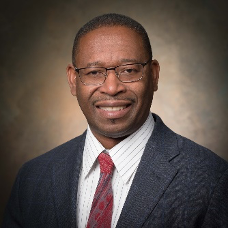
Curtis James
Sr Mgr, Aeronautical Engineer, Lockheed Martin
Mr. James has 26+ years of experience within various engineering disciplines, project management, and within supply chain management. As senior manager at Lockheed Martin, Curtis leads a multi-disciplined department of 90 engineers, SMEs, project managers, and technicians to satisfy all Flight Test Instrumentation objectives across all of Sikorsky (Nationwide and International). He works within the Test and Evaluation value stream and successfully manages staff, Operations, Supply Management personnel, and supply base to satisfy flight testing requirements.
Curtis joined Sikorsky as a Test Systems mechanical design engineer in Stratford Connecticut. He later moved to the position of Project Manager and Value Engineer where he led cross-functional teams in the execution of strategic corporate projects. Curtis later moved to the Sikorsky Aircraft WPB Florida site, where he was appointed to develop and manage Flight Test Systems design and support capabilities for the site. He held positions with increasing responsibilities including Flight Test Systems Design manager, and Flight Test Instrumentation manager. As Instrumentation manager, he worked to consolidate the flight test instrumentation value stream under a single chain of command.
Within the community, Curtis is a board member of Junior Achievement of the Palm Beaches and the Treasure Coast. He is a member of the Palm Beach State College Business Partnership Council for the Electrical Power Technology program and Engineering Technology program and is a FIRST mentor. Curtis is a graduate of Rensselaer Polytechnic Institute earning MS & BS degrees in Mechanical Engineering and a MS degree in Enterprise Management. He holds 2 US patents.
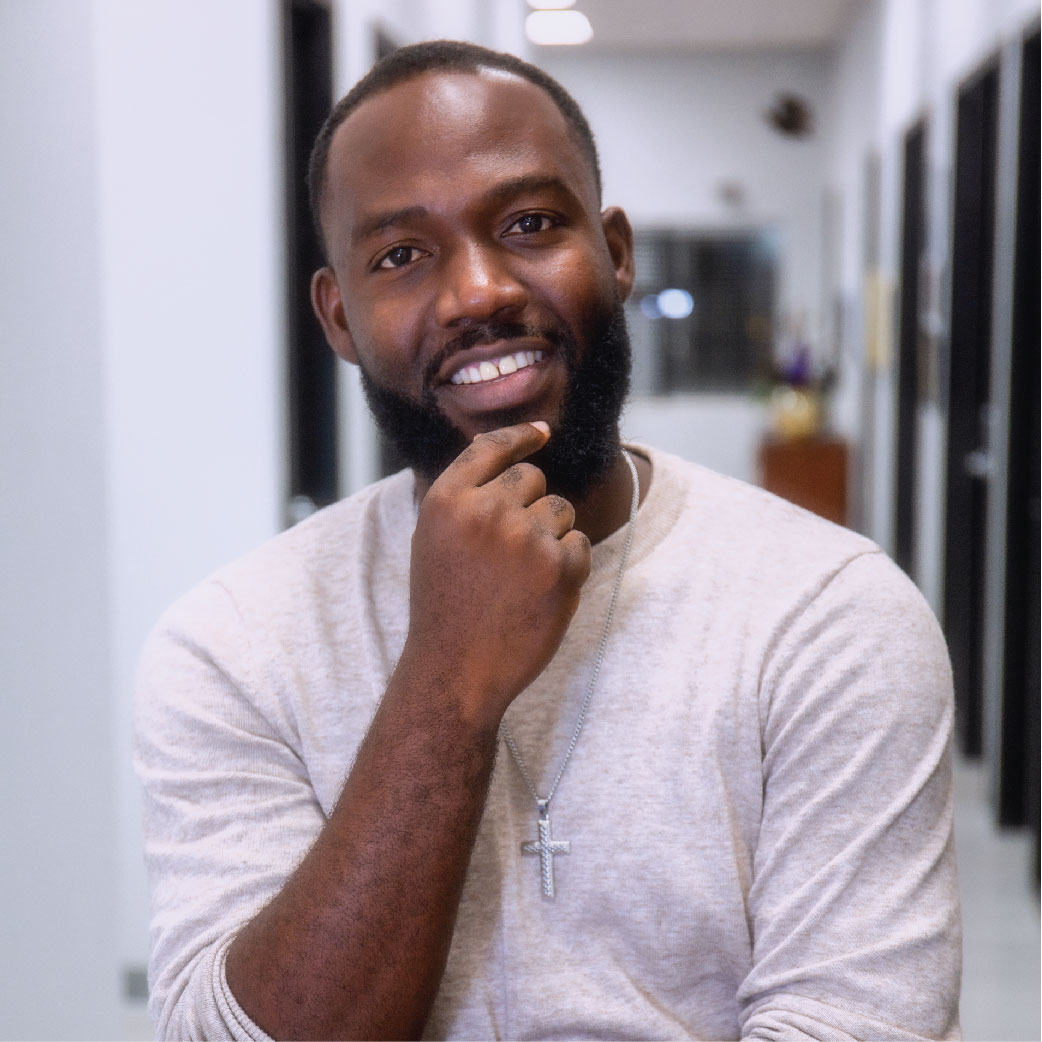
Wilford Romelus
Wilford Romelus, known as Mr. Wil in the community, is the founder and Executive Director of Digital Vibez, Inc. Over the past 18 years, Mr. Wil has served youth and families in and around Palm Beach County in various capacities ranging from Afterschool Counselor to Coordinator, Youth Liaison, and then Program Director before he started his own business. In 2010, he started teaching computer literacy classes and hosting family nights at local schools and community-based organizations. That business has now grown into a well-known, innovative nonprofit organization that encompasses dance fitness, creativity, mentoring, arts, and technology as a way to engage youth in positive activities. Mr. Wil recognized a need for more positive alternatives when he was robbed at gunpoint by local teens. After the robbery, he learned that there was a lack of access to positive opportunities for youth in this community. This experience motivated Wil to keep pushing the mission of Digital Vibez and to keep growing. Mr. Wil focuses on hiring staff from the local community who can relate to the youth that he serves. He knows all too well what it is like not to have positive influences around as he struggled to raise himself and his brother from a young age after leaving Haiti. He feels compelled to make sure that more youth get opportunities for positive and creative outlets.
Now, Digital Vibez not only brings a plethora of programs to afterschool and summer campsites, but also holds family and community events, organizes countywide health initiatives like Let’s Move PBC, operates multiple specialty summer camps, and hosts the largest annual youth event of its kind: KidsFit Jamathon. The mission of Digital Vibez is to empower youth in diverse and underserved communities through dance fitness, technology, and the arts.
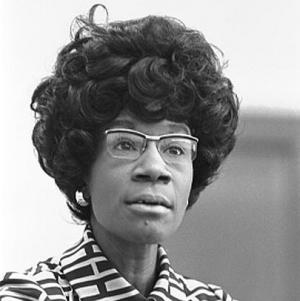
Shirley Chisholm
Shirley Anita St. Hill Chisholm was the first African American woman in Congress (1968) and the first woman and African American to seek the nomination for president of the United States from one of the two major political parties (1972). Her motto and title of her autobiography—Unbought and Unbossed—illustrates her outspoken advocacy for women and minorities during her seven terms in the U.S. House of Representatives.
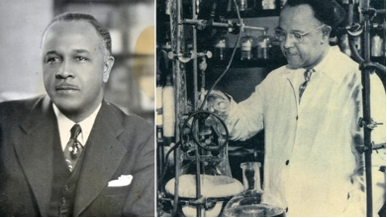
Percy Lavon Julian | Made pain relief affordable
Percy L. Julian (1899 – 1975) was a chemist who discovered innovative and cost-effective ways to synthesize steroids.
Despite Black people being denied education past eighth grade in his home state of Alabama, Julian was accepted to DePauw University in Indiana and took high school courses concurrently with his university courses to catch up. After graduating as valedictorian of his class in 1920, Percy Julian struggled to find work. (DePauw University Archives and Special Collections) As the university was in a segregated town, he wasn't allowed to live in a dorm, but did odd jobs at a white fraternity in exchange for a space to sleep in their attic. After graduating as valedictorian of his class in 1920, he struggled to find work. He was denied opportunities to get his PhD in the U.S., so he went to Europe, and attended the University of Vienna. After getting his doctorate, he returned to the U.S. and became a research associate at DePauw University, where he was the first to synthesize the anti-glaucoma drug physostigmine. After proving his skills as a chemist, he was hired as director of research at Chicago's Glidden Company, where he focused mainly on the chemical properties of the soybean plant. A brilliant chemist, Julian discovered innovative and cost-effective ways to synthesize steroids. (DePauw University Archives and Special Collections)
During his 17 years there, he was awarded over 100 chemical patents, including for a fire-retardant foam used widely during the Second World War. His biggest contributions were to biomedical research. By figuring out how to synthesize important medicinal compounds from plants, he helped make steroids like cortisone and birth control pills significantly more affordable to mass-produce.
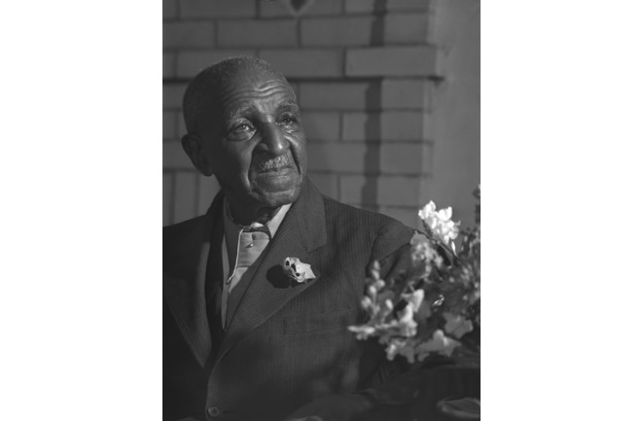
George Washington Carver (1864-1943)
Born into slavery in 1864, George Washington Carver is best known for his innovations in farming, soil restoration and peanuts. After the Civil War ended, Carver and his older brother James learned to read and write. Though his brother soon turned to farming, Carver focused on his studies and interest in botany — even learning how to mix herbal remedies and nurse plants back to health, earning him the nickname “the plant doctor.” Later on, Carver enrolled in the botany program at Iowa State University, becoming the first African American to earn a bachelor’s and master's degree in science. Impressed with Carver's skills in botany and crop science, Booker T. Washington offered him a prestigious position at Tuskegee University in Alabama. He accepted the position in 1896 and worked there until his death in 1943.
Carver’s research led to the idea of crop rotation, which helps the restore nitrogen in soil after harvesting any singular crop, such as cotton. He suggested planting soybeans, peanuts and sweet potatoes to add nutrients to the soil and create an abundance of food for landowners. Carver is also credited for the idea of permaculture, in which carbon is pulled from the atmosphere to improve crop growth. This is a key factor in combating climate change and is used in some farms today. At the end of the day, besides being one of the most influential Black scientists who changed history, Carver was always a man for the people. He donated his life savings — about $60,000 (nearly $1 million today) to a museum and foundation in his name. His gravestone, which you can visit today at Tuskegee, reads: “He could have added fortune to fame, but caring for neither, he found happiness and honor in being helpful to the world.”
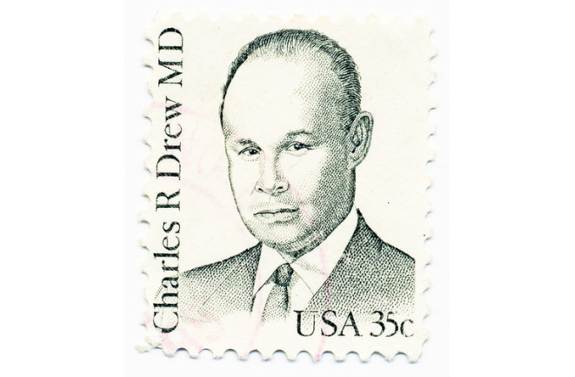
Charles R. Drew (1904- 1950)
One of the most prominent surgeons of the early-20th century — as well as African American scientists in history — Charles R. Drew is remembered as the creator of the blood bank, the first director of the American Red Cross and the first Black man to earn a doctorate from Columbia University.
While growing up in Washington, D.C., Drew earned an athletic scholarship to play football and run track at Amherst College. After earning his degree in 1926, he became a biology professor and football coach at Morgan College in Maryland (now Morgan State University) to earn money for pursuing his medical degree. Two years later, Drew attended McGill University in Canada — eventually graduating top of his class and receiving awards for his work with transfusion medicine. In 1938, Drew went to New York City to train at Presbyterian Hospital, where he developed a method for long-term storage of blood plasma. This came in handy: With World War II raging, soldiers were in need of blood. So Drew spearheaded the Blood for Britain campaign, which helped collect 5,000 liters of blood and saved many lives. He then became the first director of the American Red Cross but left the position after two years, outraged at the racial segregation of the blood they collected. In 1950, at the age of 45, he died in a car accident on his way to Alabama for a medical conference. Many rumors stemmed from his death, including that he was refused a blood transfusion from a white doctor. However, all of these claims have been proven false.
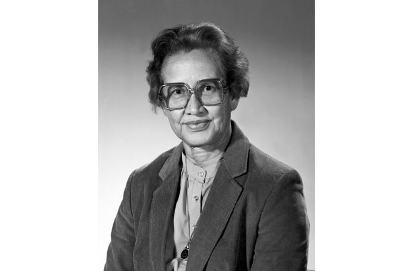
Katherine Johnson (1918-2020)
Katherine Johnson, a prominent mathematician, is one of the first Black women to work as a NASA scientist. Johnson’s love for math and numbers started at a young age; by the age of 10 she was already enrolled in high school. After graduating with high honors from West Virginia State College in 1937, Johnson began teaching. But in 1939, when West Virginia schools integrated, Johnson and two men were invited to join a graduate program and became the first Black students at West Virginia University. Although Johnson left the university to start a family with her then-husband, James Goble, she began working for the National Advisory Committee for Aeronautics in 1953, an organization that would later become NASA. She worked as a computer – long before the Microsoft or Apple machines came around – in the West Area Computing unit. The 2016 film Hidden Figures shares a glimpse of her life (portrayed by Taraji P. Henson) and career, alongside colleagues Dorothy Vaughn (Octavia Spencer) and Mary Jackson (Janelle Monáe).
During the Space Race, Johnson was brought on to NASA’s Space Task Group. There she became the first woman to co-author a paper on engineering and the first woman to sit in on mission debriefings. She helped calculate the path for both Freedom 7, the first U.S. human spaceflight, and Friendship 7, allowing Alan B. Shepard Jr. and John Glenn to safely visit space. She worked on other missions, too, including Apollo 11 and Apollo 13. Johnson retired from NASA in 1986. In 2015, President Obama awarded her the Presidential Medal of Freedom. NASA also named a computational research facility, a satellite, and a spacecraft that supplied the International Space Station in Johnson’s honor. She died in 2020 at the age of 101, still an inspiration to many in the STEM field — and leaving a lasting legacy as one of the most influential Black scientists (and female) who changed history.
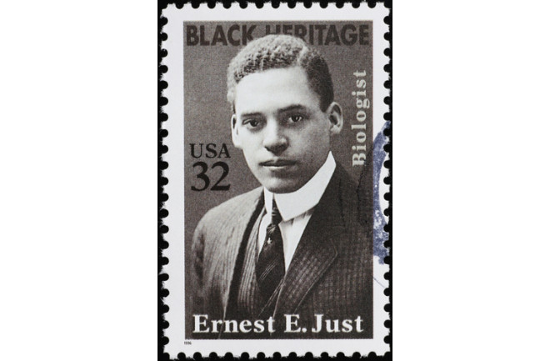
Ernest Everett Just (1883-1941)
Ernest Everett Just is best known for his work in biology and marine animal fertilization. Born in Charleston, South Carolina, in 1883 and raised by a single mother, Just contracted a case of typhoid fever at the age of 4 that impaired his cognitive abilities. As a result, he was forced to relearn how to read and write. Though he struggled greatly, Just ultimately graduated in 1907 as the only magna cum laude of his class at Dartmouth University. Just then turned to teaching at Howard University, starting in the English department but soon becoming a biology instructor and eventually the head of its new zoology department. From there, Just became the first Black man to work at the Marine Biological Laboratory while pursuing his postgraduate degree through the University of Chicago. There he worked with Frank Lillie, the laboratory's director, on the fertilization of marine vertebrates; the work earned Just the first NAACP Spingarn Medal.
Realizing he was unlikely to find work at a traditionally white university, Just expanded his horizons to Europe — particularly Berlin. When World War II broke out, he was imprisoned by German Nazis for a short time but was eventually released with the help of his father-in-law. Though he returned to the U.S. safely, he died a year later from pancreatic cancer. But his impact as one of the most remarkable Black scientists of all time is well alive today.
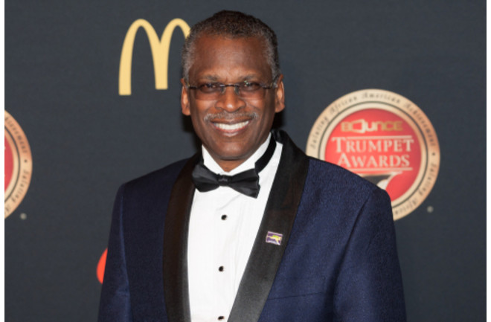
Lonnie Johnson
NASA engineer and inventor Lonnie Johnson is the father of some of our favorite toys, plus dozens of other patents. All of you ’90s kids who grew up playing with Nerf guns and Super Soakers have Johnson to thank. His own father, a military truck driver, taught Johnson about electrical currents and how to fix household appliances at a young age. This sparked his curiosity in building and creating things, and his talent for mechanics and experimentation quickly landed him the nickname "The Professor" among friends. Johnson spent most of his teen years tinkering with mechanics and small engines, even building a robot called Linex for a fair at the University of Alabama in 1968. Despite Linex coming in first place, the University of Alabama overlooked Johnson as a possible future student. Instead, he ended up going to Tuskegee University (where an inspiration of his, George Washington Carver, taught). He attended on a scholarship, earning a bachelor’s degree in mechanical engineering followed by a master’s degree in nuclear engineering.
After college, Johnson joined the U.S. Air Force, where he helped develop a stealth bomber program. Later he worked for NASA's Jet Propulsion Laboratory, helping the Galileo mission get to Jupiter and the Cassini mission reach Saturn. In 1989 he designed the Super Soaker squirt gun, then known as the Power Drencher in. Within two years, the toy generated $200 million in sales. To this day, Johnson has several patents under his belt and is always working on new inventions. He's currently a member of the nonprofit 100 Black Men of Atlanta and a member of the Georgia Alliance for Children, undeniably, holding a special place as one of the most influential African American scientists.
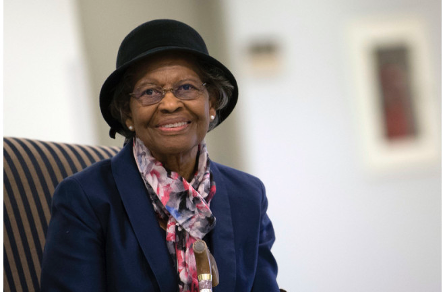
Gladys West
Gladys West is a prominent mathematician known best for her development of the Global Positioning System (GPS). West knew from a young age that she wanted to continue her education. But at the time, the only opportunities for young Black women in her community were to work as sharecroppers or in a tobacco plant. Knowing she wanted more, she studied hard and, after graduating as valedictorian, was granted a full scholarship to Virginia State College. By 1955 West had earned both her bachelor’s and master’s degrees in mathematics. West searched for a teaching position but was continually turned down by racist and sexist institutions. However, in 1956, the U.S. Naval Proving Ground (a weapons lab) hired West as a mathematician. She became one of four Black employees, including her future husband and fellow mathematician, Ira V. West.
During her time there, West solved math problems by hand before programming a computer to do it for her. She worked on projects that related to Pluto and Neptune, acted as project manager for a U.S. Navy ocean surveillance satellite and helped create a GPS service. Like Katherine Johnson, Dorothy Vaughn and Mary Jackson, West is considered a “hidden figure" and one of the most regarded Black scientists of all time. Her contributions to science were often overlooked because of her race and gender. Among her other achievements with the Navy, West also earned a master’s and doctoral degree in public administration. She's been awarded numerous awards including the Prince Phillip Medal, HBCU Digest's Female Alumna of the Year and an induction into the U.S. Air Force Hall of Fame. West retired in Virginia. You can read more about her in her memoir, It Began With A Dream.
Additional Resources, Events, and Organizations
- To nominate an individual to be featured, email [email protected]
- Follow us on Facebook, Instagram and Twitter to join the conversation
- Black Chamber of Commerce of Palm Beach County
- The History of African American Communities in Palm Beach County
- Urban League
- African American Heritage Sites in Palm Beach County
- Black Girls Code



